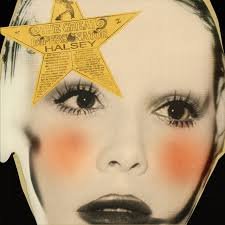The Great Impersonator by Halsey: A Review
By Music Editor Beth O’Halloran
Content warnings: Mentions of death and illness
I’m being honest in saying Halsey was never my cup of tea. Her lyrics always seemed quite pretentious to me at fifteen-years-old. Her “cursive” singing style, warbly and poorly annunciated, never appealed either. It’s safe to say my perspective has recently been changed.
American singer-songwriter Halsey released her fifth studio album on the 25th of October, following a nostalgic, vintage-inspired pre-album rollout. Evoking the album’s title The Great Impersonator, Halsey began counting down the days to the album's release by releasing photoshoots of her impersonating various musicians and muses, each corresponding to a track. The eighteen days before the album's release saw her pose as the likes of Kate Bush, Dolly Parton, Marilyn Monroe, Fiona Apple, and Ireland’s very own Dolores O’Riordan. This eclectic mix of photographs saw her morph from one icon to another, much like a chameleon, or at best the work of Cindy Sherman. Using the images of artists I love so dear, such as David Bowie, Tori Amos, or PJ Harvey frightened me at first. I was afraid that despite the precision and care used when recreating these tributes, it would be in vain. I feared that the upcoming album would be a cheap impersonation, like a tribute act passing themselves off as the real deal, or that all the hype built up around the release would ultimately serve as promotion to another soundtrack for H&M shoppers. I’ve never been so happy to have been proven wrong.
The album is her longest standard edition yet, with eighteen songs totalling just over one hour of listening. Themes of mortality, life, love, and legacy are explored throughout an album that Halsey previously stated she believed would be ‘the last album [she] ever made’. Following a series of major life events, such as a diagnosis of lupus and a T-cell disorder, as well as the birth of her son in 2021, it’s no wonder that mortality and legacy are at the centre of this album. In fact, it throws you into the deep end from the first note. “The Only Living Girl in LA” sees her question whether or not she would sell out her own funeral allows us to ask whether or not the industry really stops beyond the grave.
A thought which only became obvious to me when listening was that the promotional recreations of iconic artists are direct inspirations for their corresponding tracks. For example, “Lonely is the Muse” takes heavy inspiration from noughties rock anthems, as the corresponding ‘impersonation’, if you will, is of Amy Lee of Evanescence, of whom Halsey has previously dubbed a hero of hers. The instrumentals on “Panic Attack” have perfectly nailed the sound of Fleetwood Mac’s Rumours, which is further expanded on in a live performance which sees Halsey perform the track in a dress that could very well have belonged to Stevie Nicks. Halsey has previously stated on X (formerly Twitter) that the album is inspired by multiple decades of music at once. Seen on “Darwinism”, a David Bowie-inspired track that could also easily be an early Radiohead single, a mix of surrealist instrumentals and thought-provoking lyrics shows that Halsey knows what and who has inspired her. As well as this, it serves as a tribute to how inspirations were once impersonators themselves. In fact, “Hurt Feelings” sees the artist impersonate herself, with an indie-pop track that reuses the sounds found on Halsey’s debut album.
Perhaps my favourite aspect of this album is that, despite the anger felt though the guitars and rage shown through the lyrics of “Ego” and “Dog Years”, there are many moments of tranquillity. A stand-out track for me is “I Believe in Magic”, a gentle acoustic folk ballad taking inspiration from Linda Ronstadt. Her introspective songwriting details her observations of her son growing up, as well as her own fears of not being there to watch it happen. With a gentle nostalgic melody as well as her son’s own speaking voice weaved throughout the song, it offers a slice of hope that’s equally teemed with sadness.
Some might argue that the album offers nothing new in sound or quality, and while it’s not revolutionary, I see it more as a tribute to music past and present. Every musician that inspired this album, past and present, was once someone inspired by someone else. It raises the question of every musician and artist being an impersonator of some sort, someone trying to emulate someone else’s success, sound or legacy. The Björk inspired titular track serves as the album’s closer, the lyrics of which remind you of an epitaph. The closing words to the album are a haunting reminder that life is fleeting, and if this were to be her final album, a tribute to her career and those who love her.
An album full of references for music nerds, as well as a touching tribute to those who have inspired her and also those she loves, The Great Impersonator is an album that brings music past and present to the space between life and death. On that note, time will tell the success and legacy of these songs, but I think we may have a contender for album of the year.



